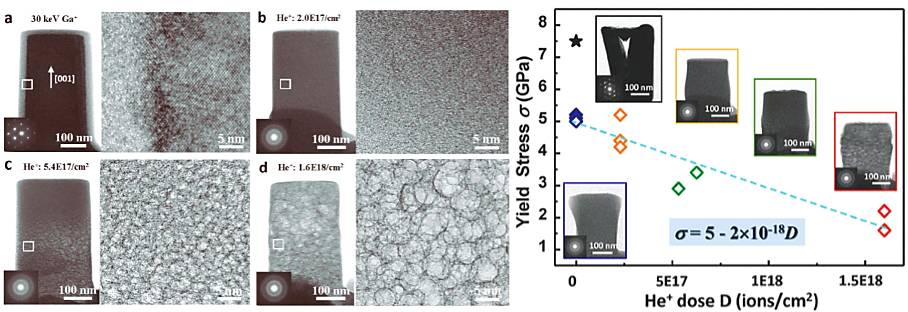Reported by Yuncun Wang
The ability to machine and polish materials controllably on the micro- and nanoscale, and to observe the morphological evolution of the products being fabricated, is essential for today’s advances in nanotechnology. Recently, state-of-the-art helium ion microscope (HIM) has become a popular tool in this regard due to its high resolution, non-contamination and ability of precise nanofabrication. One hitherto unexplored problem, however, is the potential alteration of the structure and properties of the small-volume material being micro-machined or examined.
Recently, the PhD student Yuecun Wang of CAMP NANO, XJTU-MSE used silicon as a prominent case study and utilized state-of-the-art in situ quantitative nanomechanical testing system, to demonstrate the dramatic effects of helium ion irradiation. Structurally, a sub-micron Si pillar can turn completely amorphous at helium ion doses typically used for micromachining, forming nanobubbles at higher doses. In terms of mechanical properties, the flow stress decreases markedly with the increasing dosage, and the softened amorphous Si exhibits spread-out plastic flow. These findings are important, considering the wide application of Si in computer and MEMS devices, and the increasing use of nanotechnologies in these industries.

The structure (left) and mechanical behaviors (right) change of Si
micropillars with the increasing helium ions dosage
The project is supervised by Prof. Zhiwei Shan and Prof. Evan Ma. Besides Dr. Lin Tian and Dr. Yuanbin Qin from our faculty, Prof. Jingtao Wang and his PhD student Fan Liu, Gong Zheng from Nanjing University of Science and Technology also made a significant contribution to this work. This work has been published on the top research journal, Small (Impact factor 8.315).


